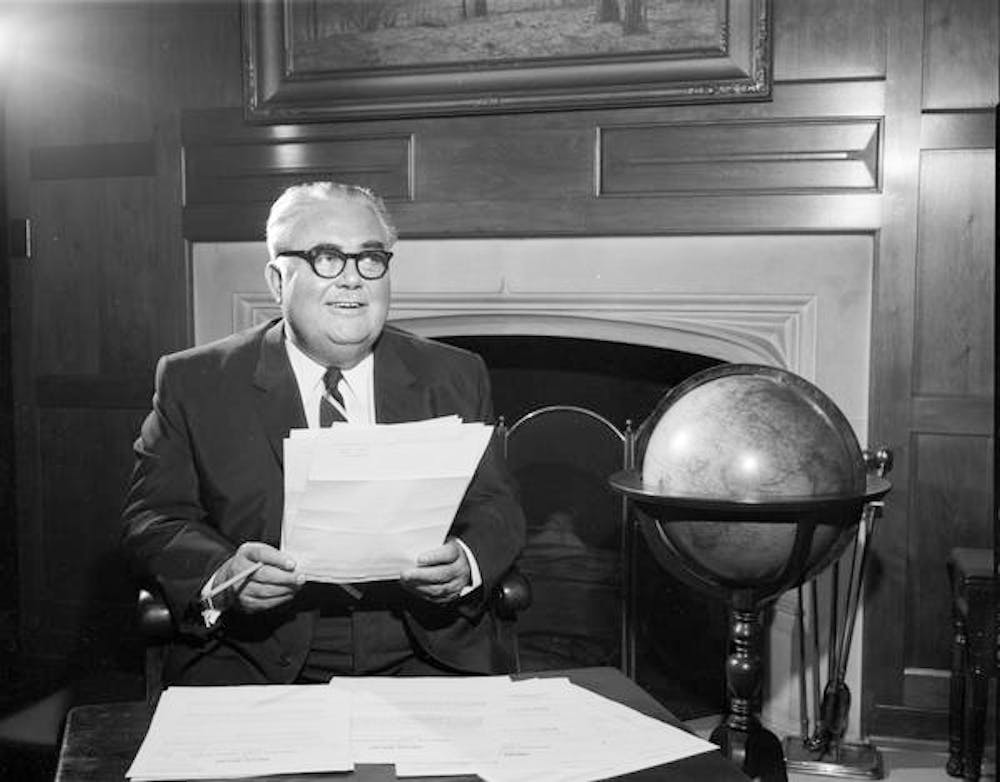If you’ve visited IU’s Bloomington campus, you’ve probably seen or heard the name Herman B Wells. Perhaps you’ve visited Herman B Wells Library at the corner of Tenth and Jordan. Maybe you’ve shaken the hand of the statue of Wells located in the Old Crescent, the original part of IU’s campus.
Wells was born on June, 1902 in Jamestown, Indiana. He was named Herman B Wells, his middle name simply being the letter B. This is why there is no period in Wells’ name. It was a tradition in his mother’s family to have names that begin with the letter B, but Wells’ parents couldn’t agree on a name.
After graduating from Lebanon High School in 1920, Wells enrolled in the University of Illinois. In 1921, he returned to Indiana and transferred to IU for his sophomore year.
This is where his legacy begins.
As an IU student, Wells was a member of the Sigma Nu fraternity. The fraternity house still stands at 322 E. Kirkwood Ave, now the home of Soma Coffee House and Juice Bar, Laughing Planet Cafe and other local businesses.
Wells completed both his bachelor’s degree in commerce and his master’s in economics here at IU. He worked as a banker for a short time before becoming an economics professor and eventually the dean of the School of Business Administration, later named the Kelley School of Business.
In 1937, two years after being appointed dean of the business school, Wells was appointed to be president of IU at only 35, making him the youngest state university president to date, and held the position until 1962. During his presidency, Wells oversaw the student body nearly tripling in size and the campus growing to its sprawling 1,700 acres.
Some of Wells’ greatest achievements include overseeing the construction of the Fine Arts Plaza and other arts buildings.
He was a champion of the arts and contracted I. M. Pei to design the Sidney & Lois Eskenazi Museum of Art and acquired murals by the artist Thomas Hart Benton to be incorporated into the IU Auditorium.
Wells also believed in equality in education and worked to end racial segregation at the university. He aided in maintaining academic freedom as well, particularly regarding the work of IU professor Alfred Kinsey, whose research in human sexual behavior was highly controversial in the 1930s and 40s.
Upon his resignation from the presidency in 1962, the IU Board of Trustees created the position of university chancellor for Wells. He was chancellor until his death in 2000, but his legacy has endured well beyond his years of service to the university.






